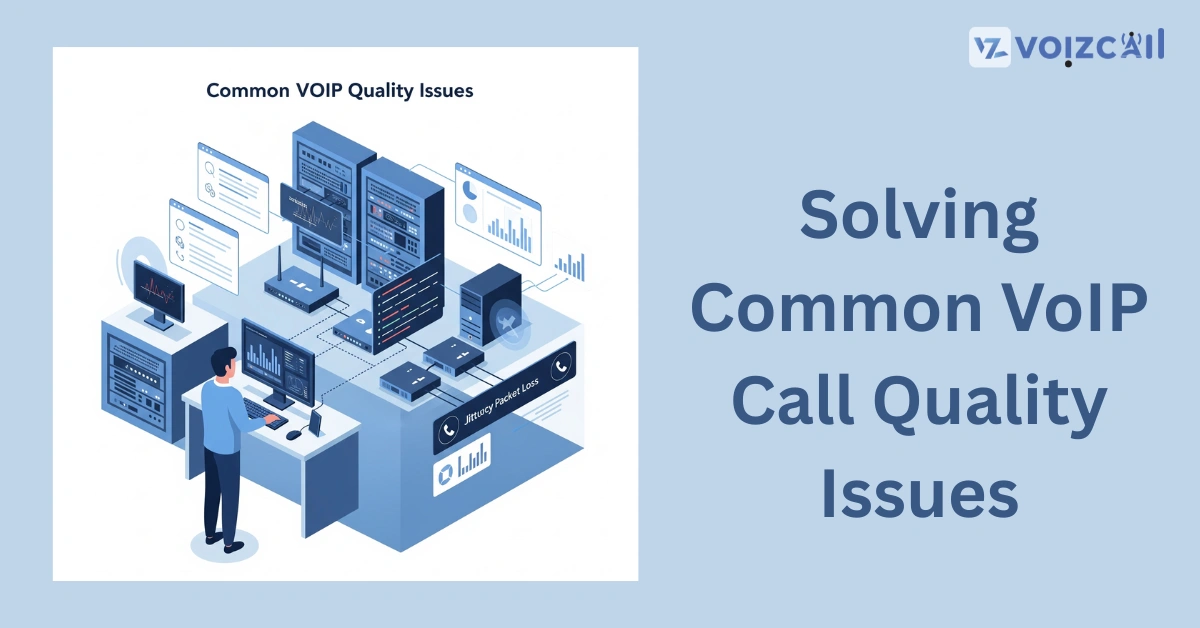


30/May/2025
Have you ever been in an important call with a client when the voice or the connection keeps breaking up? You have company. A lot of businesses find that the VoIP call quality is so poor that conversations are disrupted and productivity suffers. The good news is that you can fix your credit problems.
We’ll take you through the main VoIP audio challenges and show you how to address them. No matter your experience with VoIP, these tips will improve the quality of your calls.
1. Uncover What the Problem Is
It’s necessary to figure out the problem before fixes are attempted with VoIP calls. Common issues include:
Low internet bandwidth
Network congestion
Old or faulty hardware
Improper router settings
Call / Email for Sales Inquiry Today
If jitter, latency or packet loss happen, you experience blurry video and audio.
They may look complicated, but they get easier to understand when you know where to find the information.
2. VoIP Call Quality Solutions That Actually Work
Here are the most effective VoIP call quality solutions you can implement today:
Check Your Internet Speed
VoIP needs a reliable connection. At least 100 kbps per call is a good baseline. For video calls, you’ll need more.
Upgrade Your Equipment
Old headsets, outdated routers, and low-quality microphones can seriously hurt your call experience. Invest in business-grade VoIP hardware.
Prioritize VoIP Traffic on Your Network
Use QoS (Quality of Service) settings on your router to give VoIP traffic the highest priority. This reduces VoIP audio issues caused by other devices hogging bandwidth.
Use a Wired Connection
While Wi-Fi is easy, Ethernet gives you a more reliable connection. Wired connections help reduce jitter and dropped calls.
3. Tips and Steps for Solving Frequent VoIP Call Quality Problems
If you are still having difficulty with call quality, try using this easy guide to fix your problems.
Try a speed test – Check that your connection can manage VoIP.
Look for any available updates for your device’s software, as they could bring issues.
Restart your router and VoIP device – A simple reboot often solves hidden issues.
Test with another device – This helps you rule out hardware issues.
Contact your VoIP provider – If nothing else works, they may need to check your settings or server quality.
4. Stop VoIP Problems at the Source
Don’t wait to cure a problem when preventing it is easier. To avoid issues, you need to watch out for these things.
Monitor your network regularly
Train your team on basic troubleshooting
Schedule routine equipment maintenance
Choose a reliable VoIP service provider with strong support
When you’re proactive, you talk more and need to earn less.
Let’s see why the difference between AI and human understanding matters.
VoIP becomes a powerful tool for your business as long as it operates smoothly. Just by following these easy steps, you can sort out most common VoIP call problems and get the most out of every talk.
If you are experiencing trouble with calls being clear or with audio cuts, keep reading. You might want to start speaking with an expert. What is the greatest problem you’ve run into with VoIP calls?